
Baghdad College of Medicine / 4
th
grade
Student’s Name :
Dr. Ammar Talib Al-Yasseri
Lec. 1
Diabetic Foot & its
Management
Tues. 25 / 2 / 2016
DONE BY : Ali Kareem
مكتب اشور لالستنساخ
2015 – 2016

Diabetic Foot Dr. Ammar Al-Yasseri
25-22016
2
©Ali Kareem 2015-2016
DIABETIC FOOT
Objectives
Definition
Epidemiology
Pathophysiology
Classification
The complications of longstanding diabetes mellitus often appear in the foot,
causing chronic disability.
Epidemiology
o More than 30% of patient attending diabetic clinics have evidence of
peripheral neuropathy or vascular disease
o about 40% of non-trauma related amputations are for complications of
diabetes.
o nearly one in six patients die within 1 year of their infection
Pathophysiology
Factors predisposing diabetic patients to developing diabetic foot are :
1. Peripheral vascular disease
2. Damage to the peripheral nerves
3. Reduced resistance to infection
4. Osteoporosis
Peripheral vascular disease
Atheroseclerosis affects mainly the medium sized vessels below the knee

Diabetic Foot Dr. Ammar Al-Yasseri
25-22016
3
©Ali Kareem 2015-2016
o The pt. may complain of claudication or ischemic changes and ulceration in
the foot.
o The skin feels smooth and cold the nails show trophic changes .
o pulses are weak or absent
o Superficial ulceration occurs on the toes
o deep ulceration typically under the heel these ulcers are painful and tender
o Digital vessels occlusion may cause dry gangrene of one or more toes.
o Proximal vascular occlusion resulting in extensive wet gangrene.
Peripheral neuropathy
o Early on the pt. usually unaware of the abnormality but clinical tests will
discover loss of vibration and position sense and diminish of temperature
discrimination in the feet
o Symptoms : mainly due to
1- Sensory impairment : symmetrical numbness and parasthesia, dryness
and blistering of the skin, superficial burns and skin ulcers due to shoe
scuffing or localized pressure
2- Motor loss : muscle weakness and intrinsic muscle imbalance usually
manifests as claw toes with high arches and this may in turn predispose
to plantar ulceration.
Neuropathic joint disease (Charcot joints)
o It is chronic, progressive, destructive process affecting bone architecture
and joint alignment in people lacking protective sensation.
o The mid tarsal joints are most commonly affected followed by the MTP and
ankle joints
o There is usually provocative incident such as a twisting injury or a fracture
following which joint collapses relatively painlessly
o In late cases there may be severe deformity and loss of function. A rocker-
bottom deformity from collapse of mid foot is diagnostic.

Diabetic Foot Dr. Ammar Al-Yasseri
25-22016
4
©Ali Kareem 2015-2016
Osteoporosis
o There is generalized loss of bone density in diabetes.
o In the foot the changes may be severe enough to result in insufficiency
fractures around the ankles and or in the metatarsals.
Infections
o Diabetes, if not controlled is known to have adverse effect on the white cell
function. This combined with the local ischemia, insensitivity to skin injury
and localized pressure due to deformity, makes sepsis an ever recurring
hazard.
Classification
Diabetic foot infection may be classified as:
Superficial: often associated with ulceration.
Deep infection: may involve soft tissues only with abscess formation or can
involve bones (osteitis or osteomylitis). This type of infection can also
involve local joints (pyogenic arithritis).
Another classification system is Wagner’s classification which is one of the most
widely used and universally accepted grading systems for DFU, consisting of six
simplistic wound grades used to assess ulcer depth (grades 0-5)
Wagner classification system
0 Pre-ulcerative area without open lesion
1 Superficial ulcer (partial/full thickness)
2 Ulcer deep to tendon, capsule, bone
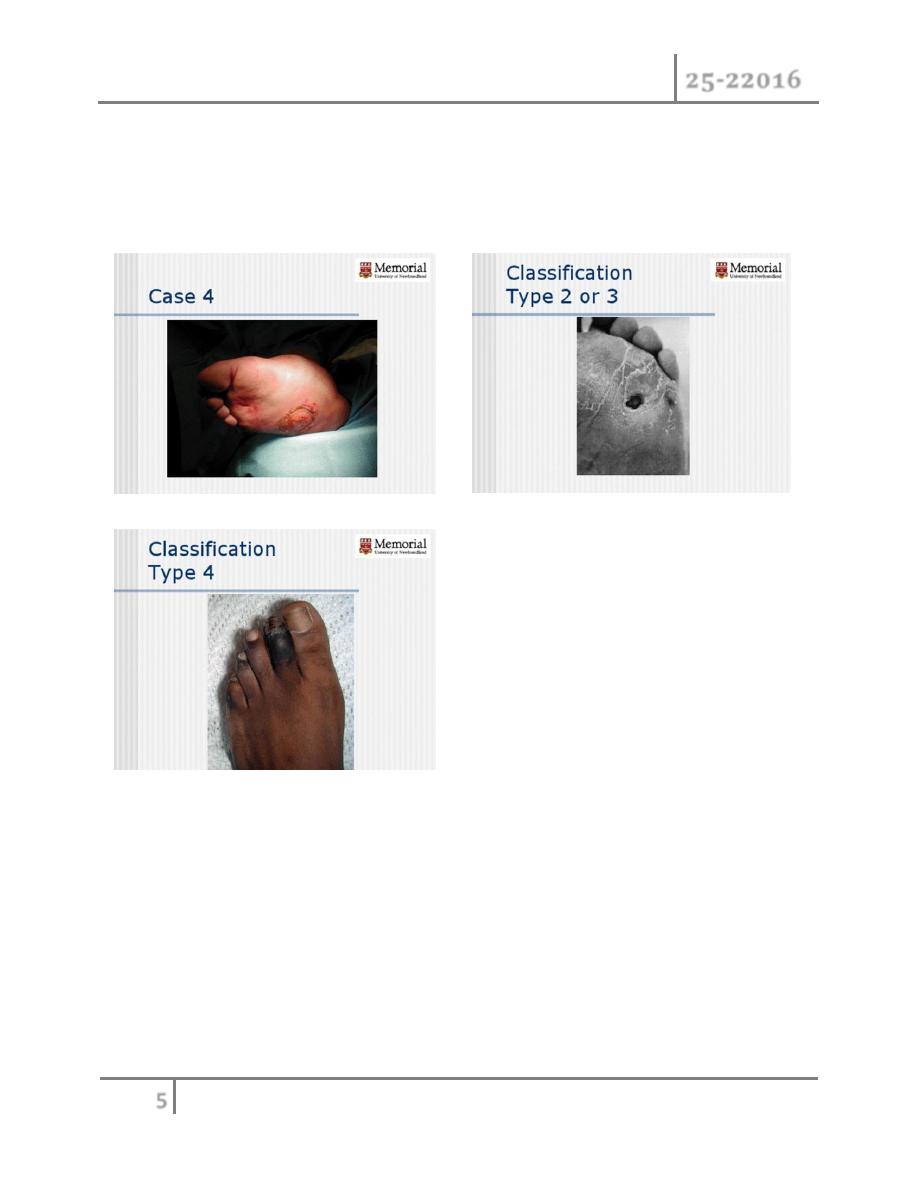
Diabetic Foot Dr. Ammar Al-Yasseri
25-22016
5
©Ali Kareem 2015-2016
3 Stage 2 with abscess, osteomyelitis or joint sepsis
4 Localized gangrene
5 Global foot gangrene.
Prevention & Management of Diabetic Foot
Prevention
o The best way of preventing complications is to insist on regular attendance
at a diabetic clinic.
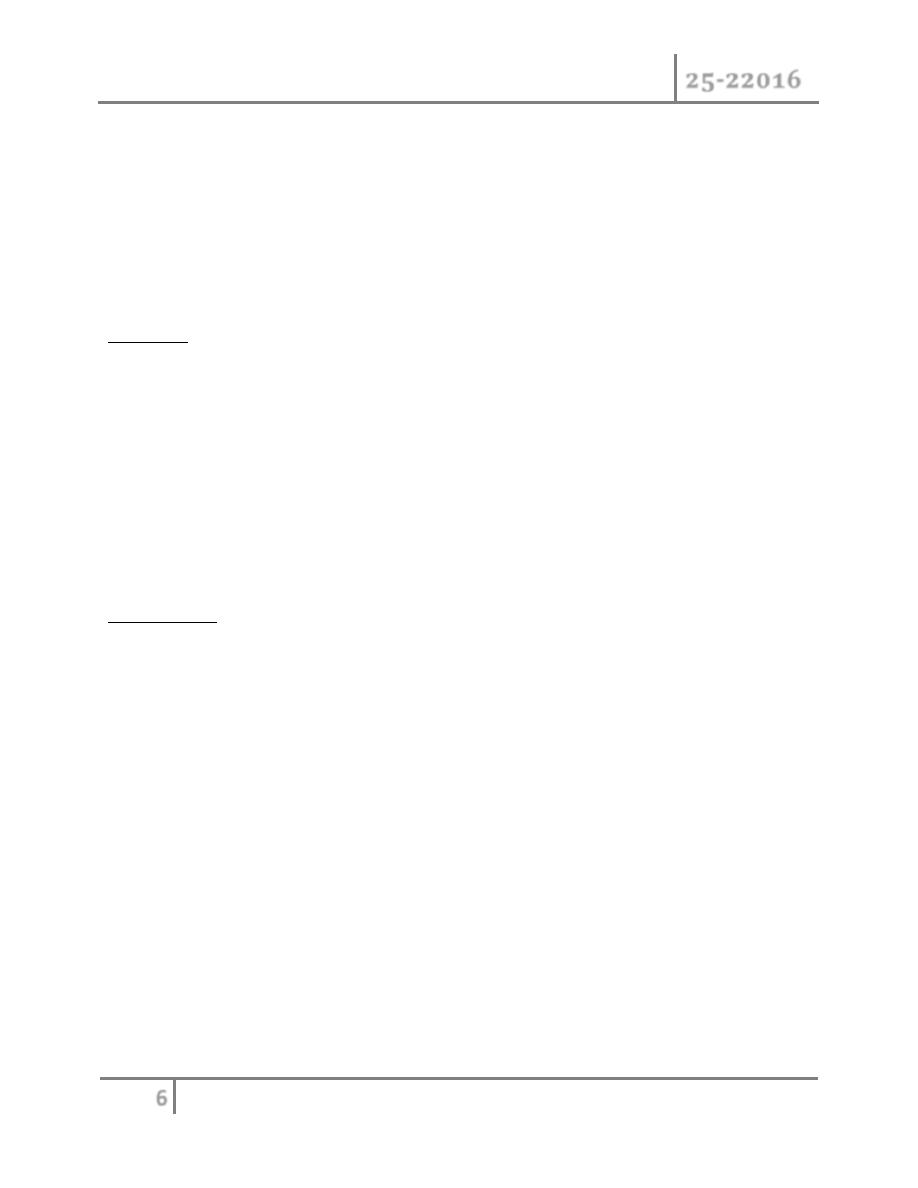
Diabetic Foot Dr. Ammar Al-Yasseri
25-22016
6
©Ali Kareem 2015-2016
o Full compliance with medication
o Examination for early signs of vascular or neurological abnormality.
o Advice on foot care and footwear and a high level of skin hygiene.
Foot care for the at risk patients
To do list:
o
Inspect the foot daily using a mirror to see the sole and don’t forget
between the fingers.
o Wash feet daily
o Apply lotion to avoid skin cracks and if present skin cracks should be
kept clean and covered
o Use a comfortable shoe wear and change it often
o Inspect shoes before wearing it from inside and outside. *Great care is
needed with nail trimming
Not to do list:
o Smoking
o Step into bath tub without checking the temperature of the water.
o Use hot water bottles or heating pad.
o Use keratolytic agent to treat the calluses or corn. *Wearing a tight shoes or
stocking.
o Walking with barefeet
Management of Diabetic Foot
For the management of diabetic foot there should be a multidisciplinary team
comprising a physician (or endocrinologist) ,orthopaedic surgeon, surgeon,
chiropodist and orthotist
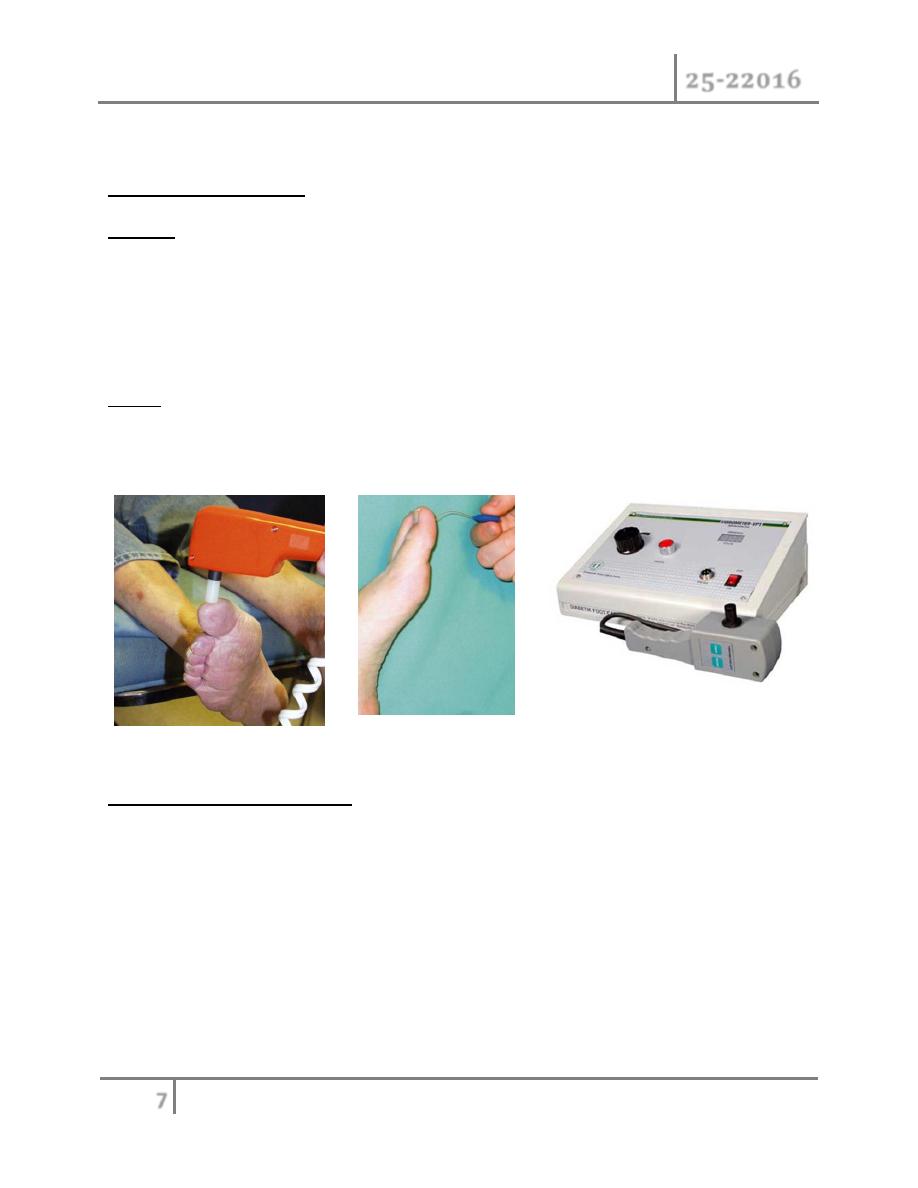
Diabetic Foot Dr. Ammar Al-Yasseri
25-22016
7
©Ali Kareem 2015-2016
Evaluation of Diabetic Foot patient
Peripheral neuropathy :
Sensory : Examination for early signs of neuropathy should include the use of
Semmes-Weinstein hairs (for testing skin sensibility)
Biothesiometer (for testing vibration sense),
Thermal discrimination test
Joint position sense.
Motor : examine for wasting, weakness, absent or diminished tendon reflex, and
deformities (claw toes, hammer toes, pes cavus). This can be enhanced by the
EMG & N/C study.
Peripheral vascular damage : examine for
o The pulses,
o Skin temperature,
o Trophic changes in the skin and nails
o Peripheral vascular examination is enhanced by using
Doppler ultrasound probe,
Ankle brachial index measurement,
Absolute toe pressure,
Transcutaneous oxygen measurement,
Angiography.
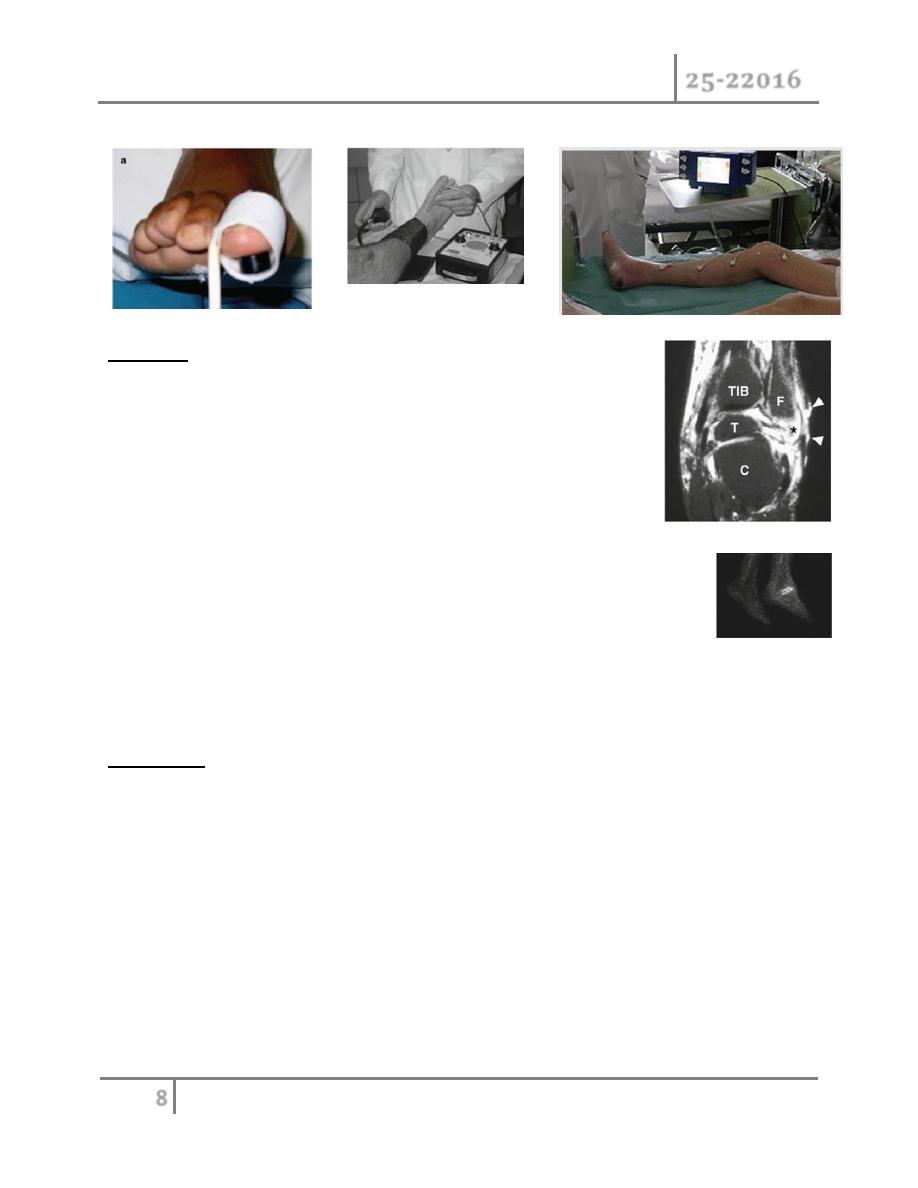
Diabetic Foot Dr. Ammar Al-Yasseri
25-22016
8
©Ali Kareem 2015-2016
Infection : examine for
o The local and systemic signs of infection.
o Ulcers must be swabbed for infecting organisms.
o Magnetic resonance imaging (MRI) is the most specific
and sensitive non-invasive test to evaluate OM and is
also useful for the evaluation of a probable abscess or
sinus tract formation.
o Bone scans, such as the white blood cell labeled Indium-111,
Technetium-99m HMPAO and Sulfur Colloid Marrow
Scan, may prove beneficial between distinguishing acute
and chronic infections, also it is useful for identifying OM
from Charcot neuroarthropathy
Osteopathy : examine for
o Charcot deformities (flatening of the foot arches, rocker-bottom deformity,
prominent metatarsl heads.
o X-ray examination may reveal periosteal reactions, osteoporosis, cortical
defects near the articular margins and osteolysis - often collectively
described as 'diabetic osteopathy
Laboratory investigations
o WBC elevated in 50% of patients.

Diabetic Foot Dr. Ammar Al-Yasseri
25-22016
9
©Ali Kareem 2015-2016
o Renal function
o Electrolytes
o Acidosis
o Blood glucose level.
o Hemoglobin A1C levels provide a barometer of glycemic control averaged
over the previous 2-3 months.
o Acute phase reactants ESR &CRP (baseline and post-treatment CRP, ESR
and WBC were significantly elevated in patients who ultimately required
amputation).
o Total serum protein and albumin, well known as
determinants of
nutritional status.
o Microbiological analysis permits the appropriate selection of antimicrobial
therapy
TREATMENT
According to wagner classification :
Grade 0 (skin intact) :
o Calluses should be trimmed so as not mask active ulcer, advise the
patient how to do daily foot care and apply the preventive
measures.(extra depth shoes and pressure relieving insole)
Grade 1&2(superficial & deep ulcer but without infection ) :
o The aim here is to heal the skin, after desloughing the ulcer and
removing the hyper keratotic skin the ulcer can be dressed locally, the
application of a skin - tight POP(total contact cast) changed weekly
will allow most of the ulcers to heal. It also allows the patient to be
mobile
Grad 3 (grade2 with infection) :
o Deep infection without abscess formation can be treated by strict rest,
elevation, soft tissue support and AB.
o Occasionally, septicemia calls for admission to hospital and treatment
with intravenous antibiotics.
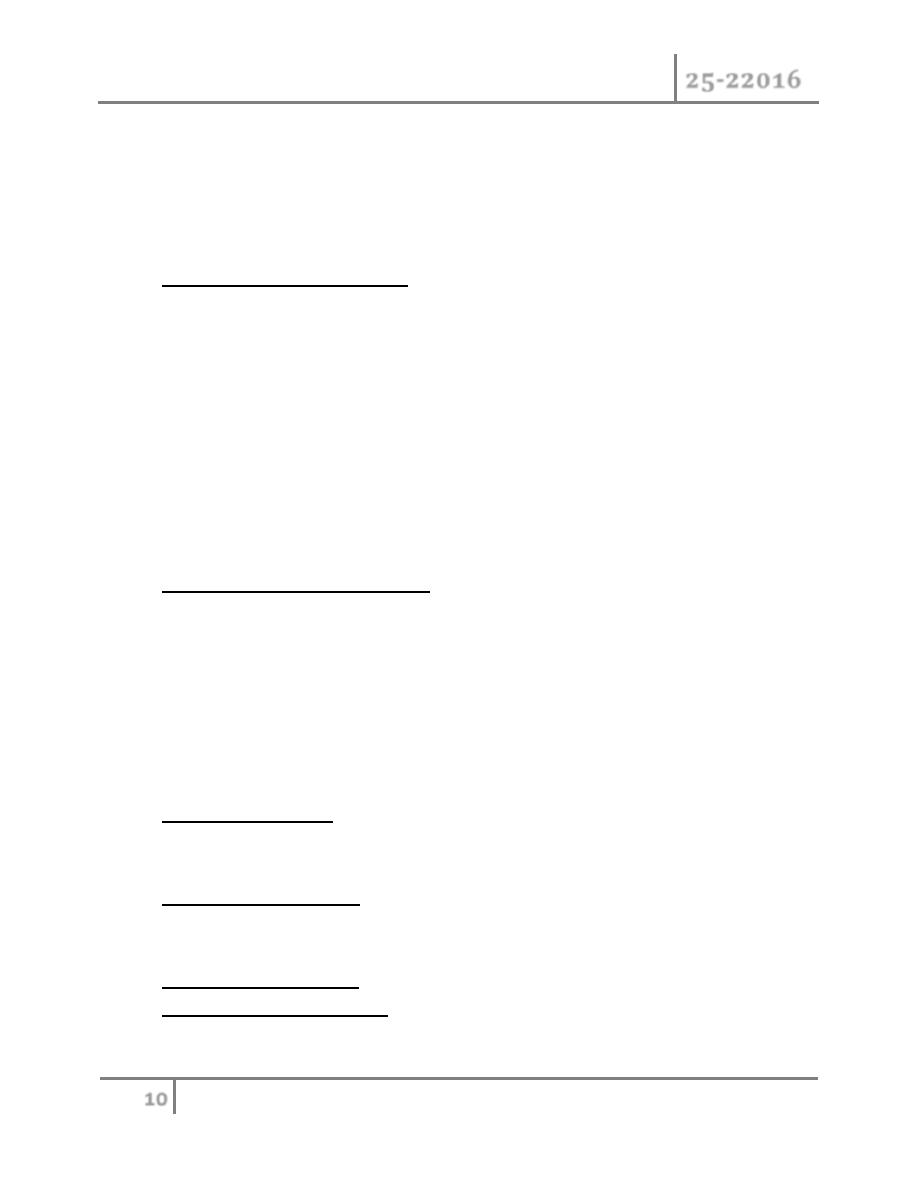
Diabetic Foot Dr. Ammar Al-Yasseri
25-22016
10
©Ali Kareem 2015-2016
o Any form of abscess formation needs to be drained urgently and the
deeper tissues thoroughly debrided.
o Deep ulcers in certain sites are more problematic than elsewhere .
Once an ulcer is healed the use of appropriate insoles and shoes can
prevent further ulceration.
Grade 4(localized gangrene) :
o Ischaemic changes need the attention of a vascular surgeon who can
advise on ways of improving the local blood supply. Arteriography
may show that bypass surgery is feasible.
o Dry gangrene of the toe can be allowed to demarcate before local
amputation.
o With diabetic gangrene septic arithritis is not uncommon , the entire
ray(toe+metatarsal bone ) should be amputated.
o In More extensive gangrene partial foot amputation done e.g. through
the midtarsal joints(Chopart),thruogh tarsometatarsal joints(lisfranc),
thruogh metatarsal bone, syme’s amputation
Grade 5(Global foot gangrene) :
o Severe occlusive disease with wet gangrene may call for immediate
amputation.
o This should be undertaken at a level where there is a realistic chance
of the wound healing.
Treatment of special problems
Ischaemic changes : need the attention of a vascular surgeon who can
advise on ways of improving the local blood supply. Arteriography may
show that bypass surgery is feasible.
Insufficiency fractures: should be treated, if possible, without immobilizing
the limb; or, if a cast is essential, it should be retained for the shortest
possible period.
Fixed foot deformities : corrective surgery should be considered.
Neuropathic joint disease : is a major challenge.
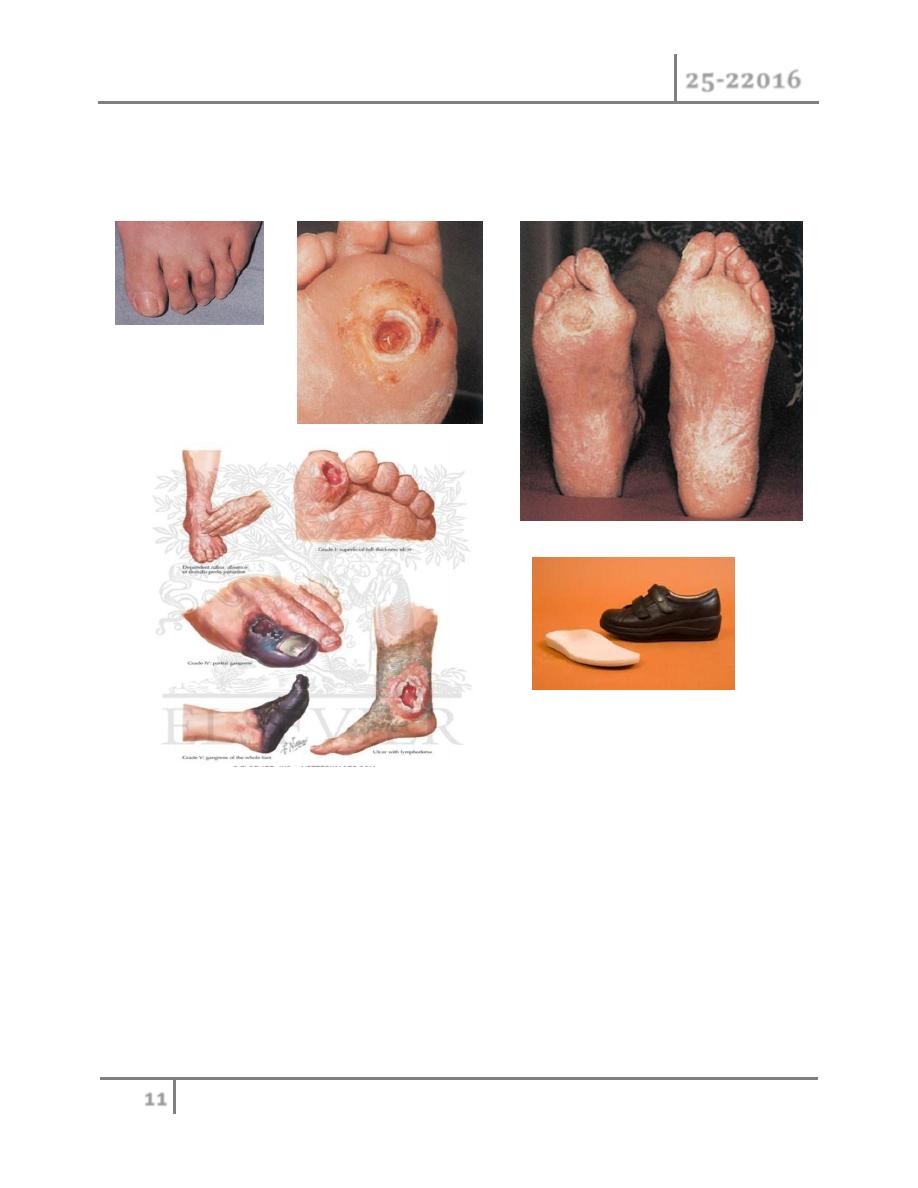
Diabetic Foot Dr. Ammar Al-Yasseri
25-22016
11
©Ali Kareem 2015-2016
Arthrodesis is fraught with difficulty, not least a very poor union rate, and
sometimes is simply not feasible. 'Containment' of the problem in a weight-
relieving orthosis may be the best option.
END OF THIS LECTURE …
